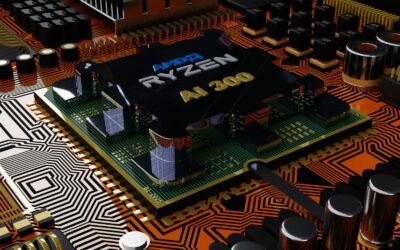Computing: The Catalyst for Seamless Real-Time Communication in the GCC
The advent of real-time communication networks optimization has transformed the way we interact, both personally and professionally. From instant messaging to video conferencing, these networks have become indispensable tools in the modern world. As the demand for real-time communication continues to grow, especially in burgeoning business hubs like Saudi Arabia and the UAE, the need for optimized network performance becomes paramount.
The Power of Computing in Network Optimization
At the heart of this optimization lies computing technology. Advanced computing solutions, such as those found in Riyadh’s King Abdulaziz City for Science and Technology or Dubai’s Internet City, are instrumental in enhancing the performance of real-time communication networks. This is achieved through a variety of ways:
Data Compression and Packet Prioritization
Computing algorithms can compress data to reduce the amount of bandwidth required for transmission. This not only speeds up data transfer but also reduces latency, a critical factor in real-time communication. Furthermore, computing allows for the prioritization of data packets, ensuring that time-sensitive data, such as voice or video, is given precedence over less urgent data.
Network Congestion Management
Real-time communication networks can often experience congestion, especially during peak hours. Computing solutions can help manage this congestion by dynamically allocating bandwidth, routing traffic through less congested paths, and even temporarily storing data to be transmitted later when the network is less burdened.
Real-World Applications: Saudi Arabia and UAE
The impact of computing on real-time communication networks is evident in the Gulf Cooperation Council (GCC) region. In Saudi Arabia, the government’s Vision 2030 initiative heavily emphasizes digital transformation, with real-time communication playing a crucial role in achieving its ambitious goals. Similarly, the UAE’s Smart Dubai initiative aims to make Dubai the most technologically advanced city in the world, and real-time communication networks are a cornerstone of this vision.
Business Transformation
In both countries, businesses are leveraging optimized real-time communication networks to improve collaboration, enhance customer service, and drive innovation. For instance, real-time communication platforms are being used for virtual meetings, remote training, and even telemedicine, revolutionizing the way businesses operate.
Social Impact
Real-time communication networks are also having a profound social impact in the GCC. They are facilitating social connections, enabling cultural exchange, and promoting education through online learning platforms. These networks are especially crucial in a region where a significant portion of the population is young and tech-savvy.
Challenges and Future Directions
While the optimization of real-time communication networks through computing is well underway, challenges remain. These include ensuring network security, addressing privacy concerns, and bridging the digital divide to make these networks accessible to all segments of society. However, with continued investment in computing technology and infrastructure, the future of real-time communication in the GCC looks promising.
5G and Beyond
The advent of 5G technology is set to further revolutionize real-time communication networks. 5G’s increased speed and bandwidth will enable even more immersive and responsive real-time communication experiences, opening up new possibilities for businesses and individuals alike.
Artificial Intelligence (AI) Integration
The integration of AI into real-time communication networks is another exciting prospect. AI can be used to optimize network routing, predict and prevent congestion, and even enhance the quality of real-time communication through features like noise cancellation and language translation.
Edge Computing
Edge computing, which involves processing data closer to the source rather than in a centralized data center, is gaining traction as a way to further optimize real-time communication networks. By reducing the distance data needs to travel, edge computing can significantly reduce latency, making real-time communication even more seamless and responsive.
Government Initiatives and Investment
Governments across the GCC are recognizing the importance of real-time communication networks and are investing heavily in infrastructure and technology to support their growth. These investments are not only aimed at improving network performance but also at fostering innovation and creating a conducive environment for businesses to thrive in the digital age.
The Human Element: User Experience and Adoption
While technology plays a crucial role in optimizing real-time communication networks, the human element cannot be overlooked. The success of these networks ultimately depends on user experience and adoption. This means ensuring that real-time communication platforms are intuitive, user-friendly, and accessible to people of all ages and backgrounds.
Conclusion
The optimization of real-time communication networks through computing is a testament to the transformative power of technology. In the GCC, this transformation is already underway, driving economic growth, enhancing social connections, and paving the way for a more digitally connected future.
#real-timecommunication #networks #optimization #computing #SaudiArabia #UAE #Riyadh #Dubai #technology #5G #edgecomputing #artificialintelligence
Focus Keyword: Real-Time























